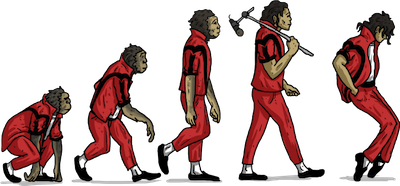Mechanisms of Evolution - Shmoop Introduction
In A Nutshell
Humans have come a long way. Not too long ago, it was all Hammer Time and the Macarena on the dance floor. Over generations, humans have evolved into a species capable of many more debatably advanced dance moves (Cha Cha Slide anyone?). Although, a throwback to Thriller every Halloween always sounds like a good idea, as a classic that has passed the test of time.

Did you ever stop and wonder what mechanisms fueled our evolution into modern dance machines? Why we have inherited some dance moves from our parents and lost others to natural selection? How we adapted our groove to changes in style and music?
Evolution is a hot topic in science. Everything is changing in our world, and not much remains the same—not even what happens on the dance floor. The idea that the organisms living on Earth today are not the same as those that existed millions of years ago is as captivating as a disco ball.
In this unit, we'll discuss what caused the world to evolve into what we see now. Mutations, Genetic Drift, Gene Flow, Sexual Selection, and Natural Selection are all mechanisms fueling the evolution of life on our planet. Like a new song on the radio or a poodle skirt, these agents have not only shaped the species we see today, but also continue to drive change on Earth.